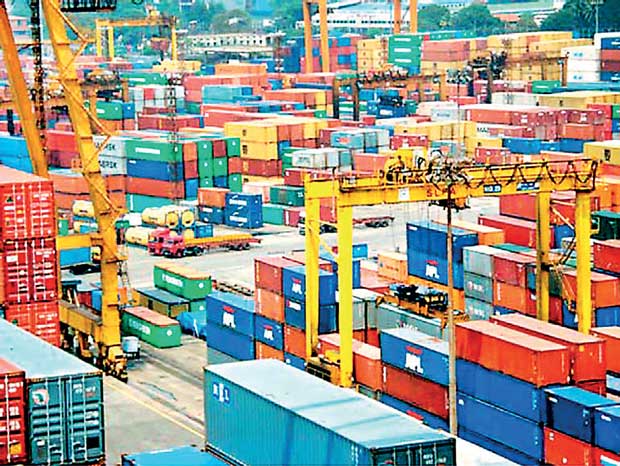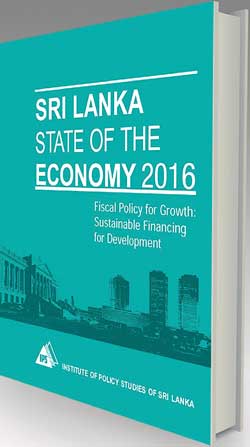10 Nov 2016 - {{hitsCtrl.values.hits}}

Trade openness has been declining steadily in Sri Lanka at a time when the rest of the world was integrating more strongly and global trade was accelerating to reach 36 percent of GDP in 2015, while FDI remains below 2 percent of GDP, over five years after the end of the armed conflict.
The decline in openness and stagnating FDI is reflected in a shrinking world market share to levels last seen in the 1980s, accompanied by a steady decline in exports and an export basket that has remained largely unchanged. To reverse this trend, Sri Lanka has now set itself an ambitious target of boosting exports to US$ 20 billion by 2020; an increase in exports of nearly 80 percent during 2016-2020.
The government has also placed significant emphasis on driving FDI, with a target of US$ 5 billion within the next three years from current levels of US$ 970 million in 2015. Hence, stronger export and FDI promotion efforts will be needed to achieve Sri Lanka’s export and FDI targets in the years to come.
Given the country’s unsatisfactory fiscal performance, efforts to channel state funds to incentivize exports and FDI will be difficult.
This calls for alternative approaches towards promoting exports and export-oriented FDI without drawing upon state assistance. In this light, export and FDI promotion agencies need to play a stronger role in facilitating export and export oriented-FDI amidst a challenging macroeconomic setting.
Export promotion
Nowadays export promotion is widespread and most governments intervene in one way or another, ranging from providing infrastructure support to offering direct export subsidies, though the latter is currently severely limited by WTO rules.
In fact, export promotion through government intervention has been an important contributor to the impressive export performance of East Asian and Southeast Asian countries including Japan, Hong Kong, the Republic of Korea, Singapore, Indonesia, Malaysia etc.
However, there is little evidence to suggest that export promotion has been the only factor leading to their export success. The overall context or environment within which export promotion took place in these countries is noted to be as important to their success, as the policy interventions themselves. It has been argued that export promotion will have greater success if they take place where there are good fundamentals (low inflation, competitive exchange rates, human capital, secure financial systems, etc.), and strong institutions to implement them.
In the case of Sri Lanka, successive governments have promoted exports through various incentives/measures including duty rebate (drawback) schemes, temporary importation for export processing (TIEP) scheme, manufactured-in-bond scheme, as well as tax incentives administered through hexport processing zones (EPZs).
Meanwhile, the Export Development Board (EDB) was set up as the apex state organization for promoting and developing exports. EDB’s role in export promotion has diluted from being a provider of direct export assistance to more of a facilitator of exports over the years.
The EDB does not currently provide any direct supply development assistance and its activities are considered by the exporters to be minimal. While some of the weaknesses have been addressed during the last one year, possible ways for strengthening the institutional setup for export promotion include:
nDeveloping a National Export Development Plan (NEDP) for Sri Lanka aimed at ensuring that the country has a strategic roadmap and a holistic export promotion drive. EDB has already undertaken efforts in this regard but its success will depend largely on the commitments of relevant state and non-state agencies for export promotion; and reactivation of the Export Development Council of Ministers (EDCM) to gain support from state agencies and ministries in this endeavour
Export Finance
Access to credit represents an important barrier to exports. In most countries, governments intervene in credit financing by establishing specialized institutions like EXIM banks that provide special credit facilities to exporters. Prevalence of such credit facilities and credit institutions circumvent the need to finance exports through direct assistance, while motivating exporters to work towards utilizing the money borrowed in order to repay their loans. This in turn can guarantee higher returns on investments compared to direct subsidies. While there is no state-funded export finance bank in Sri Lanka, Sri Lanka Export Credit Insurance Corporation (SLECIC) functions as the official state credit agency and insures exporters. Products and services provided by SLECIC are export insurance, including insurance against non-receipt or delayed receipt of payments resulting from commercial and non-commercial risks, credit guarantee for exporters, etc. However, the availability and utilization of export finance in Sri Lanka wasfound to be low.
Export finance has been an important instrument of export promotion as far back as two decades ago for most developing countries. Though there has been much discussion about setting up an EXIM bank in Sri Lanka over the years, progress in this regard has been slow.
In the 2016 Budget, Rs. 50 million was allocated as seed capital for the setting up of an EXIM bank jointly by the government and industry. The proposed EXIM bank is to be listed under the Colombo Stock Exchange (CSE). While several models of EXIM banks are currently in place around the world, it is important for Sri Lanka to decide which model would best suit its context/requirements,
Investment promotion
While FDI promotion is unambiguously associated with greater FDI flows, the effectiveness of investment promotion is likely to have the greatest impact in countries where other factors (investment climate, market size, level of development, etc.) that attract FDI are favourable.
Although there are no substitutes for having the ‘right’ basics, investment promotion and facilitation can play an important role. In fact, investment promotion and facilitation is identified to be a vital pull factor of investments to a country. Promoting investment is financially costly and public expenditures towards this end can be justified only if government agencies set up for these purposes are successful in attracting greater volumes of FDI.
In Sri Lanka, the Board of Investment (BOI) has been the government entity responsible for FDI. It functions as a central facilitation point for foreign investors and manages a number of EPZs. BOI provides assistance and advice throughout the investment process from initial point of inquiry through project approval, implementation, monitoring and aftercare facilities.
A review of BOI’s role as an investor promoter and facilitator suggests significant room for improvement in line with practices of top performing investor agencies around the world by, granting greater authority to the BOI to carry out its mandate, improving post-investment services, developing a promotional plan, adopting a more pro-active approach to attract potential investors, improving the capacity of BOI officers through training programmes, improving monitoring mechanism and maintaining comprehensive information on BOI projects and reviewing prevailing incentives structure.
Way forward
Creating an enabling environment for trade and FDI should remain the primary objective of the government in promoting trade and investment. A prerequisite is to reduce/eliminate ad hoc policy changes.
Towards this end, a systematic trade policy framework, which sets out policy guidelines and identifies principal areas of action to strengthen different aspects of Sri Lanka’s export competitiveness, is crucial. Sri Lanka also needs to streamline business procedures and undertake urgent reforms to improve the country’s business climate to attract large volumes of FDI. Whether the newly established Agency for Development and Agency for International Trade could address these anomalies remains to be seen.
(This Policy Insight is based on the comprehensive chapter on ‘Promoting Exports and FDI under Financing Constraints’ in the ‘Sri Lanka: State of the Economy 2016 Report,’ the flagship publication of the Institute of Policy Studies of Sri Lanka)
25 Nov 2024 2 hours ago
25 Nov 2024 3 hours ago
25 Nov 2024 3 hours ago
25 Nov 2024 5 hours ago
25 Nov 2024 5 hours ago